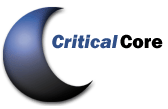
 |
|
|
|
|
Strategic Management
|
"Corporate strategy concerns two different questions: What businesses the corporation should be in, and how the corporate office should manage the array of business units," notes Michael Porter in his article “From Competitive Advantage to Corporate Strategy.” When these two questions are translated into managing workplace resources, they become: "What workplaces should the corporation be in?" and "How should the activities that select, create and support those workplaces be managed?" Critical Core can help you improve the strategic management of your workplace resources. At the organizational and portfolio level, we identify five types of strategic activities defined below, each of which must be coordinated across the traditional workplace disciplines of real estate, finance, workplace design and planning, facilities management, and construction and project management. At the asset level, strategic management requires defining and implementing a plan that combines these guidelines and initiatives with consideration of the unique characteristics of each facility. We have extensive expertise in many of these strategic activities. Core Planning was designed specifically to help real estate and facility executives quickly and efficiently evaluate alternative occupancy strategies and workplace initiatives. In areas in which we have limited expertise, we would be happy to recommend the right people to assist you. Organization and Systems. This area addresses the macro issues of how the real estate and facilities groups are organized and managed, including which aspects should be outsourced, what incentives should be put in place to guide decision making, and how it interacts with senior management, the business groups, and the other functional support groups such as human resources, technology and data. A related area is the identification and implementation of software systems to improve process efficiency and employee productivity. Guidelines. Setting guidelines addresses Porter’s first question, as translated to real estate and facilities, “what workplaces should the organization be in?” Guidelines should be developed for each workplace discipline so the people making decisions at the tactical level have a road map to ensure that workplace activities are consistent with the organizations overall business strategy and its implications for balancing quality, cost, risk, and speed. Planning. Given the long lead times needed to acquire or dispose of real estate, companies must make planning for future business needs a regular part of their strategic management processes. This planning includes determining future facility requirements and the appropriate allocation of scarce investment capital. With Core Planning, you can quickly complete multiple scenario analyses, and you can go beyond that to identify the one solution that will provide you with the right flexibility to respond to a set of alternative scenarios. Initiatives. Initiatives are major improvements and changes in workplace strategy that must be developed and implemented in a coordinated fashion. These initiatives include the decision to develop, test and implement a new alternative officing strategy and developing a new occupancy strategy to support major business changes such as growth, mergers, acquisitions, restructuring, and consolidations. Core Planning was first developed to improve this aspect of strategic management. Metrics. Metrics are both the summary of the success of real estate and facility activities and an indication of new areas for improvement. Systematic strategic management should begin with a review of basic performance metrics. These metrics help executives and managers assess current conditions, assess the performance of workplace activities, evaluate the benefits and costs of proposed initiatives, and identify opportunities for improvement. |
||
|
|
|||
|
Strategic management involves the development and implementation of a coordinated, long-term framework that defines the workplace environment and how it should be managed. It links business strategy to workplace activities, identifies opportunities for adding value through coordination, and sets the long-term strategy to balance short-term business needs, long-term commitments and an uncertain business environment. Critical Core's definition of strategic management of workplace resources. |
|||